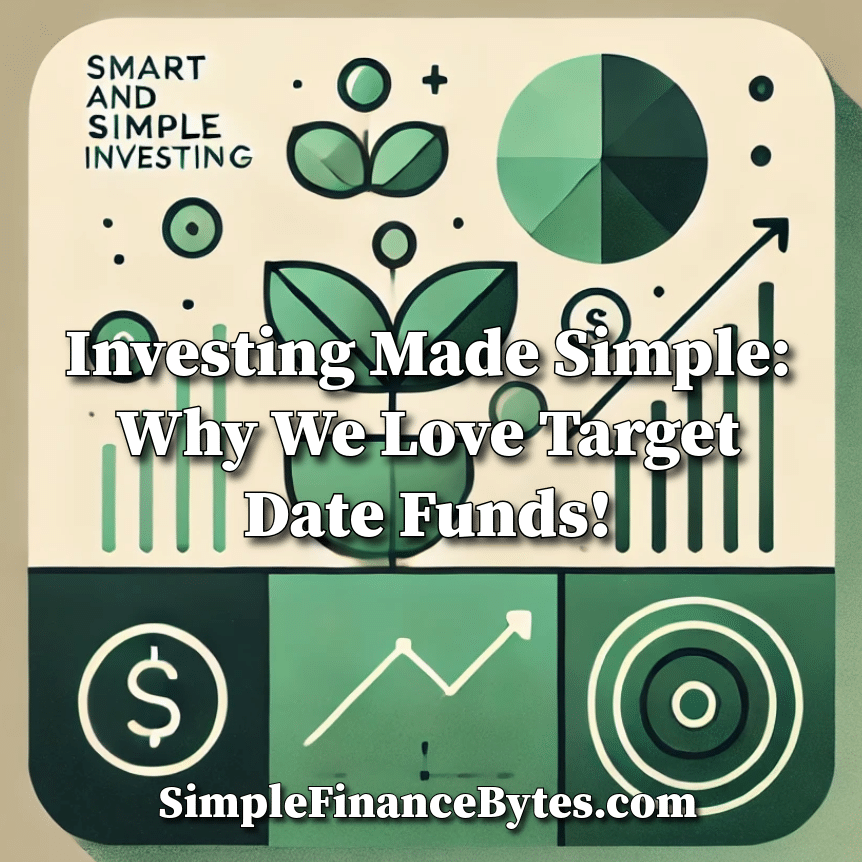Target date funds are one of the easiest ways to invest for retirement. They are simple, low-maintenance, and designed to adjust automatically as you get older. If you’re someone who wants to reach financial freedom without worrying about constantly managing your investments, target date funds are a great choice.
What Is a Target Date Fund?
A target date fund is a type of mutual fund or exchange-traded fund (ETF) that automatically changes its mix of stocks and bonds as you get closer to retirement. The “target date” is the year when you plan to retire, such as 2050, 2060, or 2070. These funds start with more stocks when you’re younger (for growth) and gradually shift to more bonds (for stability) as you near retirement.
Why Are Target Date Funds So Simple?
Many people get overwhelmed with investing because there are so many choices. But with a target date fund, you just pick the year closest to when you want to retire, invest your money, and let the fund do the rest. You don’t have to worry about rebalancing, adjusting your risk level, or picking individual stocks and bonds. The fund managers handle all of that for you.
This simplicity makes target date funds a great option for people who want to invest wisely without spending too much time managing their portfolio. It’s a “set it and forget it” approach that still gives you a well-diversified investment plan.
Target Date Funds From Major Providers
Several big investment companies offer target date funds. Here’s a breakdown of what they offer, including ticker symbols, asset allocation, fees, and how they change over time.
Vanguard Target Retirement Funds (Mutual Funds)
- Examples: Vanguard Target Retirement 2050 Fund (VFIFX), Vanguard Target Retirement 2060 Fund (VTTSX)
- Expense Ratio: 0.08% (very low cost)
- Asset Allocation:
- Early years: About 90% stocks, 10% bonds
- Retirement years: About 30% stocks, 70% bonds
- Investment Strategy: Uses low-cost index funds for broad market exposure.
- Change Over Time: Gradually shifts to a more conservative mix as you get closer to retirement.
- Best For: Investors looking for low fees and an easy, long-term investment strategy.
Fidelity Freedom Index Funds (Mutual Funds)
- Examples: Fidelity Freedom Index 2050 Fund (FIPFX), Fidelity Freedom Index 2060 Fund (FNSFX)
- Expense Ratio: 0.12% (still low)
- Asset Allocation:
- Early years: About 90% stocks, 10% bonds
- Retirement years: About 30% stocks, 70% bonds
- Investment Strategy: Invests in a mix of Fidelity index funds.
- Change Over Time: Adjusts automatically to reduce risk as retirement approaches.
- Best For: Those who want a low-cost index fund strategy with a reputable provider.
Schwab Target Index Funds (Mutual Funds)
- Examples: Schwab Target 2050 Index Fund (SWYMX), Schwab Target 2060 Index Fund (SWYNX)
- Expense Ratio: 0.08%
- Asset Allocation:
- Early years: 90% stocks, 10% bonds
- Retirement years: 30% stocks, 70% bonds
- Investment Strategy: Uses Schwab’s own index funds.
- Change Over Time: The fund automatically shifts to more bonds as you near retirement.
- Best For: Schwab customers who want a simple and low-cost option.
BlackRock LifePath Index Funds (Mutual Funds and ETFs)
- Examples: BlackRock LifePath Index 2050 Fund (LIPKX), BlackRock LifePath Index 2060 Fund (LIPWX)
- Expense Ratio: 0.09%
- Asset Allocation:
- Early years: 90% stocks, 10% bonds
- Retirement years: 40% stocks, 60% bonds
- Investment Strategy: Invests in a mix of BlackRock index funds.
- Change Over Time: Gradually shifts to a more conservative portfolio.
- Best For: Investors looking for a fund with both mutual fund and ETF options.
iShares Target Date ETFs (ETFs by BlackRock)
- Examples: iShares Target Date 2050 ETF (TGTX), iShares Target Date 2060 ETF (TGZX)
- Expense Ratio: 0.08%
- Asset Allocation:
- Early years: 90% stocks, 10% bonds
- Retirement years: 40% stocks, 60% bonds
- Investment Strategy: Uses ETFs for easy trading and lower costs.
- Change Over Time: Becomes more conservative as you get closer to retirement.
- Best For: Investors who prefer ETFs for their liquidity and tax efficiency.
What Are the Fees Like?
One of the most important things to watch for in investing is fees. Most of the target date funds listed above have low expense ratios, typically between 0.08% and 0.12%. That means for every $10,000 you invest, you pay only about $8–$12 per year in fees. Compare this to actively managed funds that may charge 1% or more, which can add up to thousands of dollars over time.
Are There Any Downsides?
While target date funds are great, they’re not perfect for everyone. Here are a few things to consider:
- One-Size-Fits-All: These funds follow a general formula that may not match your personal risk tolerance.
- Less Control: You can’t customize your investments beyond choosing the fund.
- Stock-to-Bond Mix Might Be Too Conservative: Some investors might prefer to keep more stocks in retirement.
Conclusion: The Easy Path to Financial Freedom
If you’re someone who wants to keep investing simple, target date funds are an excellent choice. They automatically adjust as you get older, they keep costs low, and they help you stay on track for retirement without constant management.
For those following principles of frugality, simple finance, and financial independence, these funds provide a stress-free way to grow your wealth over time. Whether you go with Vanguard, Fidelity, Schwab, BlackRock, or iShares, picking a target date fund can be one of the easiest and smartest financial moves you make.
If you love finding ways to save money and want more tips on achieving financial independence, join our mailing list! We share simple, actionable advice to help you live debt-free, save smarter, and enjoy life without financial stress. Sign up today and take the next step toward a better financial future!
